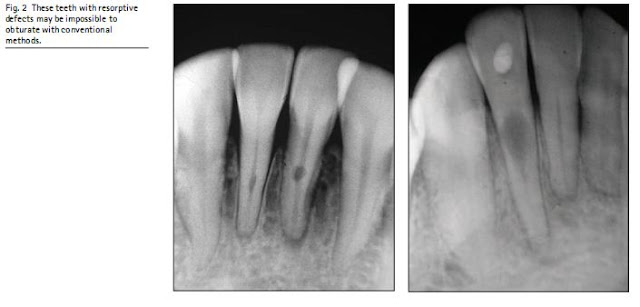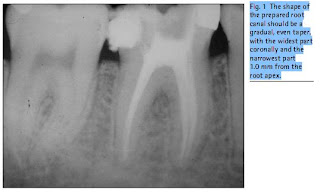With the tendency to preparation techniques of greater taper, gutta-percha points of matching taper may be used. These fit the prepared canal so well that some operators are using a single guttapercha point and sealer. The only advantage of this technique is its simplicity. The disadvantage is that the majority of sealers are soluble. As the canal will not be fully filled in three dimensions, tissue fluids may leach out the sealer over time.
This technique cannot therefore be recommended. However, in difficult anatomical cases it may be necessary to create a custom-fitted cone. A slightly large cone is selected and the apical part softened, either by solvents such as chloroform, rectified turpentine or oil of eucalyptus, or by immersion in hot water. The softened cone is fitted to working length with gentle pressure.
The cone is carefully marked for orientation, and the process repeated until a satisfactory fit is obtained. The cone should then be cleaned of all solvents, and the canal obturated using sealer in the usual way.














